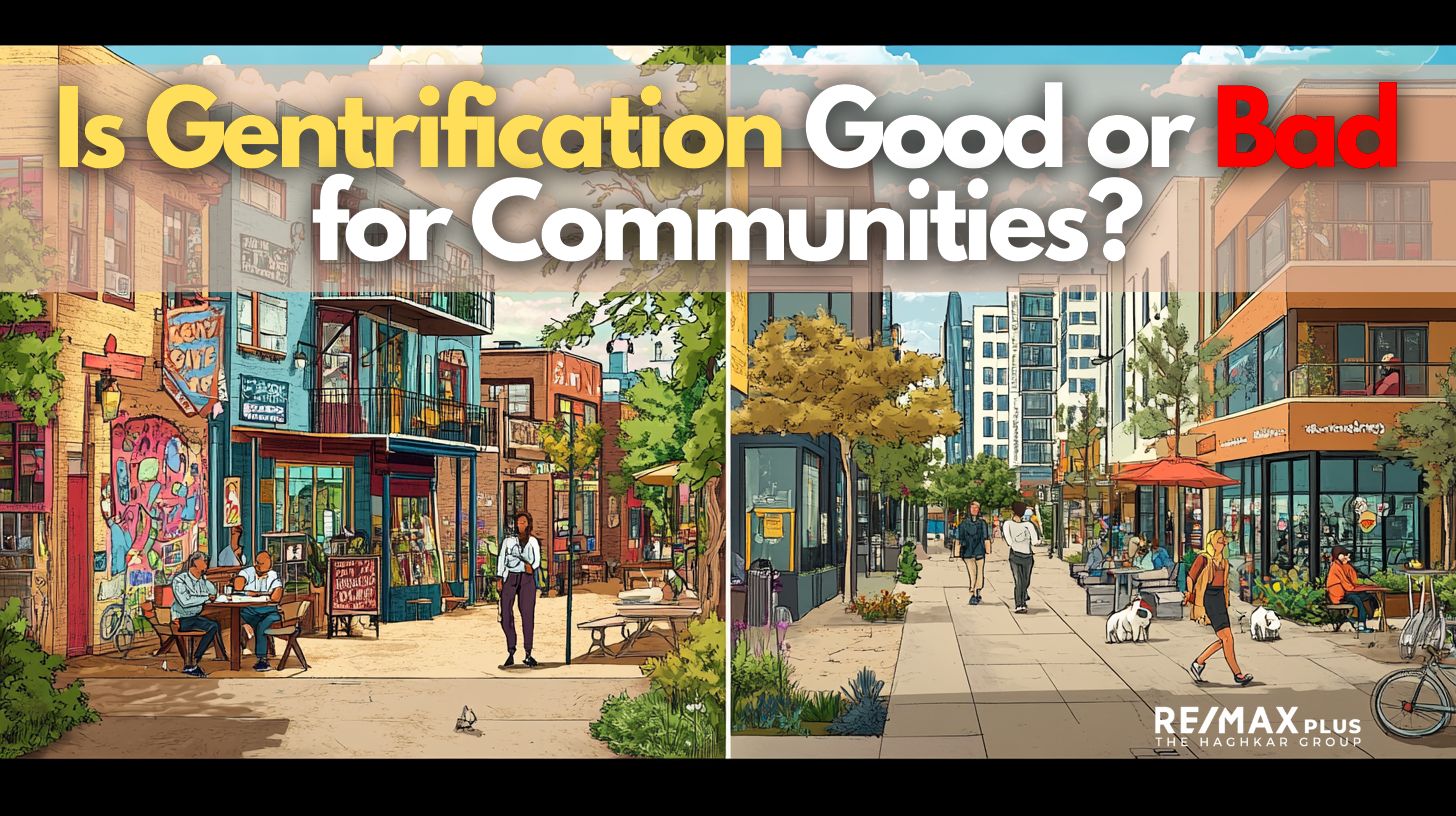
28 Mar Is Gentrification Good or Bad for Communities?
Gentrification is one of the most debated topics in urban development and real estate. At its core, it’s a process where once-neglected or under-invested neighborhoods experience revitalization—often through an influx of more affluent residents, increased property values, and new businesses. Sounds great, right?
But for many communities, gentrification isn’t just about new coffee shops and rising home prices. It can also mean displacement, loss of culture, and strained social dynamics. So the question remains: Is gentrification good or bad for communities?
The answer isn’t simple. It’s complicated, nuanced, and depends heavily on who you ask—and where you look. In this post, we’ll explore both sides of the issue, look at real-world examples, and discuss what gentrification means for residents, investors, and neighborhoods as a whole.
What Is Gentrification, Exactly?
Gentrification refers to the transformation of a neighborhood through the influx of new, typically higher-income residents and investment. This often involves:
Renovating older or run-down properties
Attracting new businesses, particularly retail and dining
Increasing demand for housing, which drives up prices and rents
Changing the socioeconomic and cultural fabric of the area
It usually occurs in urban areas where property values are lower and development potential is high.
The Upside: How Gentrification Can Benefit Communities
While the term often carries negative connotations, there are several positive aspects of gentrification that are worth noting.
1. Revitalization of Neglected Neighborhoods
Many gentrified areas were once underfunded, with aging infrastructure, vacant lots, and limited city services. Gentrification often brings:
Investment in housing and commercial properties
Improvements in public infrastructure (streets, lighting, parks)
Reduced crime rates due to increased community engagement and policing
More active local governments, responsive to new residents’ demands
These changes can improve the quality of life for everyone in the neighborhood, not just newcomers.
2. Boost to Local Economy
With new development comes new business. Gentrifying neighborhoods often see:
Small businesses thriving due to increased foot traffic
New jobs created in construction, retail, food service, and professional services
Higher tax revenues for the city, which can be reinvested into schools and public services
In theory, this economic uplift can benefit longtime residents—but only if they’re able to participate in and stay through the changes.
3. Increased Property Values
For homeowners in transitioning neighborhoods, rising home values can be a major financial win. Families who have owned their homes for decades may see their equity skyrocket, giving them opportunities to:
Refinance and renovate
Sell at a profit
Pass on wealth to the next generation
This is particularly significant in communities that have historically been marginalized or left out of wealth-building opportunities.
The Downside: Why Gentrification Can Harm Communities
Despite the economic benefits, the downside of gentrification is just as real—especially for longtime renters and vulnerable populations.
1. Displacement of Longtime Residents
The most cited criticism of gentrification is that it often displaces the very people who made the neighborhood what it was. As property values and rents rise:
Low-income residents can no longer afford to live there
Landlords may refuse to renew leases to bring in higher-paying tenants
Property taxes can rise, making it harder for longtime homeowners to stay
This leads to cultural loss, social disruption, and deep frustration among residents who feel pushed out of their own communities.
2. Loss of Cultural Identity and Community Ties
Gentrification often brings a shift in the social fabric of a neighborhood. As wealthier, often younger and less diverse residents move in:
Local businesses serving the original community may close
Historic landmarks and spaces may be replaced with new developments
Residents may feel alienated or excluded from new establishments and social norms
In many cases, the character of the community changes, sometimes overnight.
3. Uneven Distribution of Benefits
Even when neighborhoods improve, the benefits are not always equitably shared. For example:
New schools or health clinics may cater more to new residents than existing ones
Job opportunities might go to outsiders rather than locals
Public investments may arrive only after demographics begin to shift
Without careful planning and inclusive policies, gentrification can end up exacerbating inequality rather than solving it.
Real-World Examples: The Good, the Bad, and the Complex
Philadelphia, PA
Neighborhoods like Fishtown and Northern Liberties have seen dramatic changes over the past 15 years. What were once working-class neighborhoods have become hotspots for young professionals. New restaurants, condos, and entertainment options have flourished.
At the same time, residents of nearby Kensington—many of whom face poverty and addiction—have watched rents rise without experiencing the same benefits. Tensions over neighborhood identity and inclusion persist.
Brooklyn, NY
Williamsburg is a textbook example of gentrification. Once known for its strong Puerto Rican and Hasidic communities, it’s now filled with luxury high-rises and boutique shops. While the neighborhood has seen massive investment, many of the original residents have been priced out.
South Side Chicago
In areas like Bronzeville, revitalization has included efforts to preserve cultural heritage while encouraging new development. Local leaders have worked to promote affordable housing and economic inclusion. The success of such models depends heavily on community engagement and government support.
Is Gentrification Inevitable? Or Manageable?
The reality is that cities evolve, and change is inevitable. But that doesn’t mean the impacts of gentrification are out of our control. With thoughtful planning, community input, and policy tools, cities can guide redevelopment in a way that benefits both new and existing residents.
Tools That Can Help:
Inclusionary Zoning: Requires developers to set aside a percentage of new units as affordable housing
Rent Control and Stabilization: Helps protect tenants from extreme rent hikes
Community Land Trusts: Allow neighborhoods to collectively own land and ensure long-term affordability
Small Business Grants: Support local businesses that serve long-standing communities
Tax Incentives for Local Ownership: Encourage reinvestment by residents and small landlords
These measures won’t stop gentrification—but they can reduce harm and promote equity.
The Bottom Line: It’s Complicated
So, is gentrification good or bad for communities?
The answer is: it depends.
It depends on how it happens, who benefits, who gets left behind, and whether there’s a concerted effort to balance revitalization with equity. Left unchecked, gentrification can be destructive. But with the right tools and intentions, it can transform neighborhoods without erasing them.
If you’re a real estate investor, homeowner, or city planner, understanding the complexities of gentrification is key. Real estate is about more than buildings and profit margins—it’s about people, culture, and community.
Thoughtful development doesn’t just build homes. It builds opportunity.
Are you buying or selling in a changing neighborhood? Want to understand how gentrification may impact your investment or your community?

